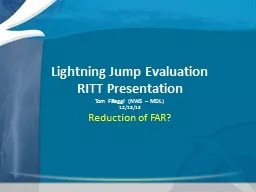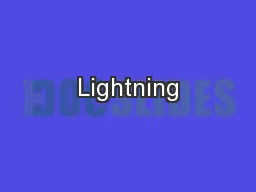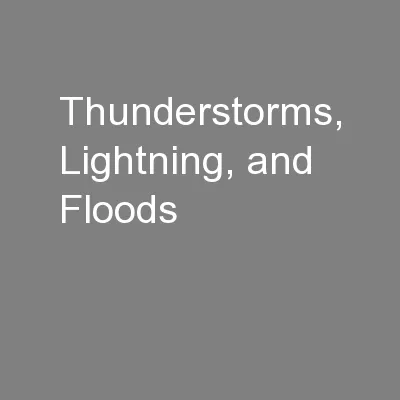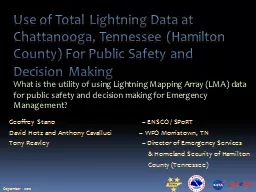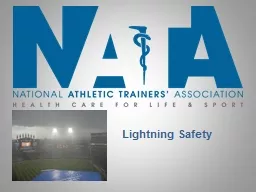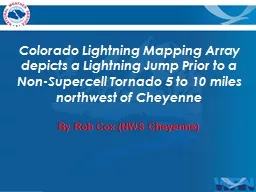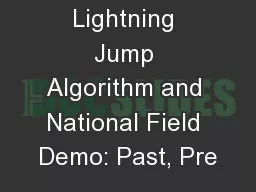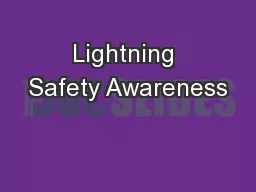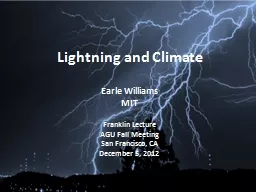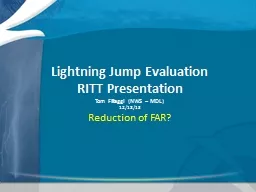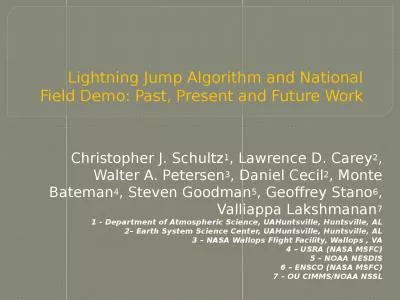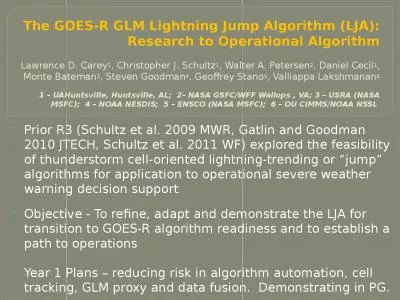PPT-Lightning Jump Evaluation
Author : lindy-dunigan | Published Date : 2016-05-23
RITT Presentation Tom Filiaggi NWS MDL 121813 Reduction of FAR Agenda Team Members Total Lightning Lightning Mapping Arrays LMAs Previous Research Summary Current
Presentation Embed Code
Download Presentation
Download Presentation The PPT/PDF document "Lightning Jump Evaluation" is the property of its rightful owner. Permission is granted to download and print the materials on this website for personal, non-commercial use only, and to display it on your personal computer provided you do not modify the materials and that you retain all copyright notices contained in the materials. By downloading content from our website, you accept the terms of this agreement.
Lightning Jump Evaluation: Transcript
Download Rules Of Document
"Lightning Jump Evaluation"The content belongs to its owner. You may download and print it for personal use, without modification, and keep all copyright notices. By downloading, you agree to these terms.
Related Documents

